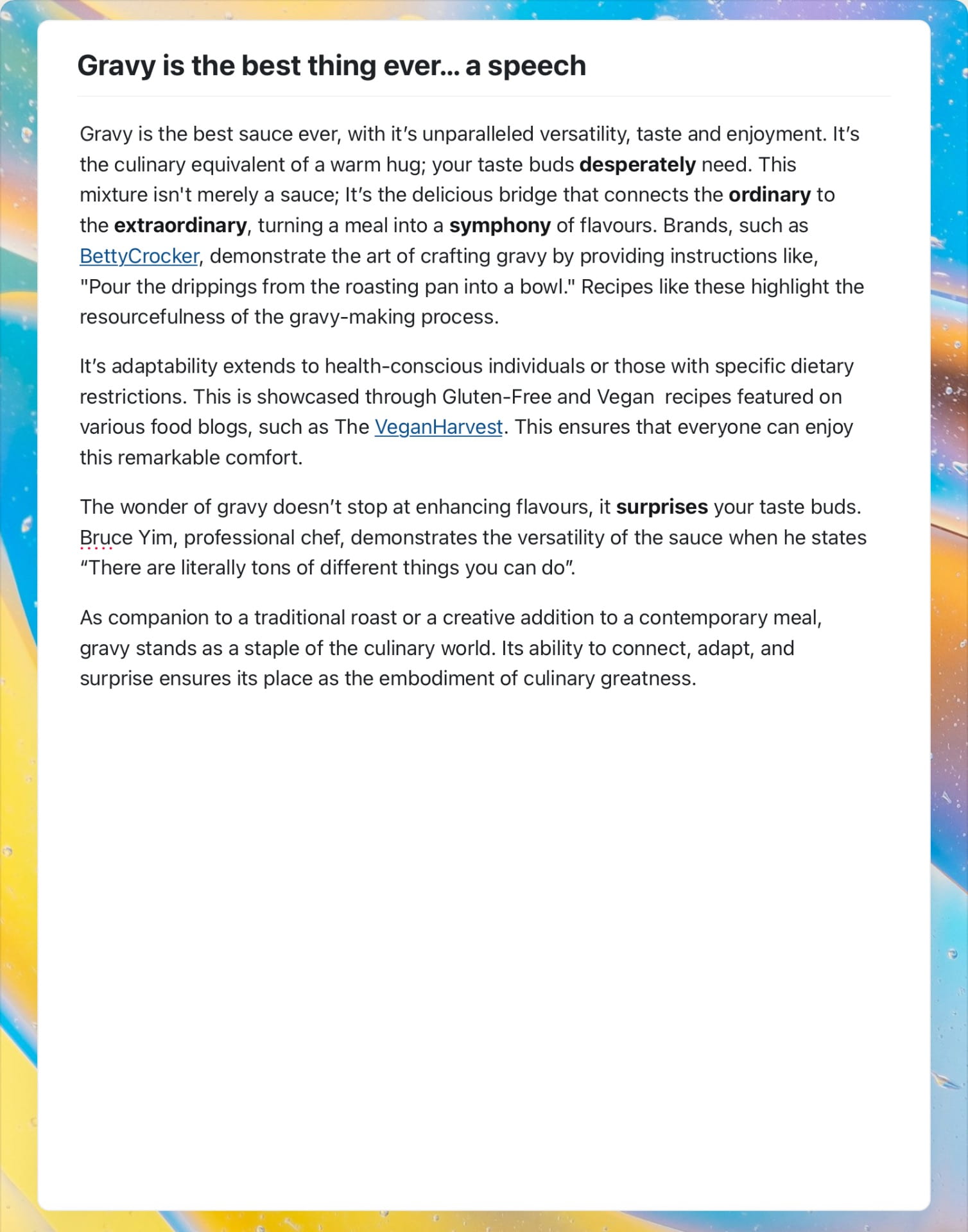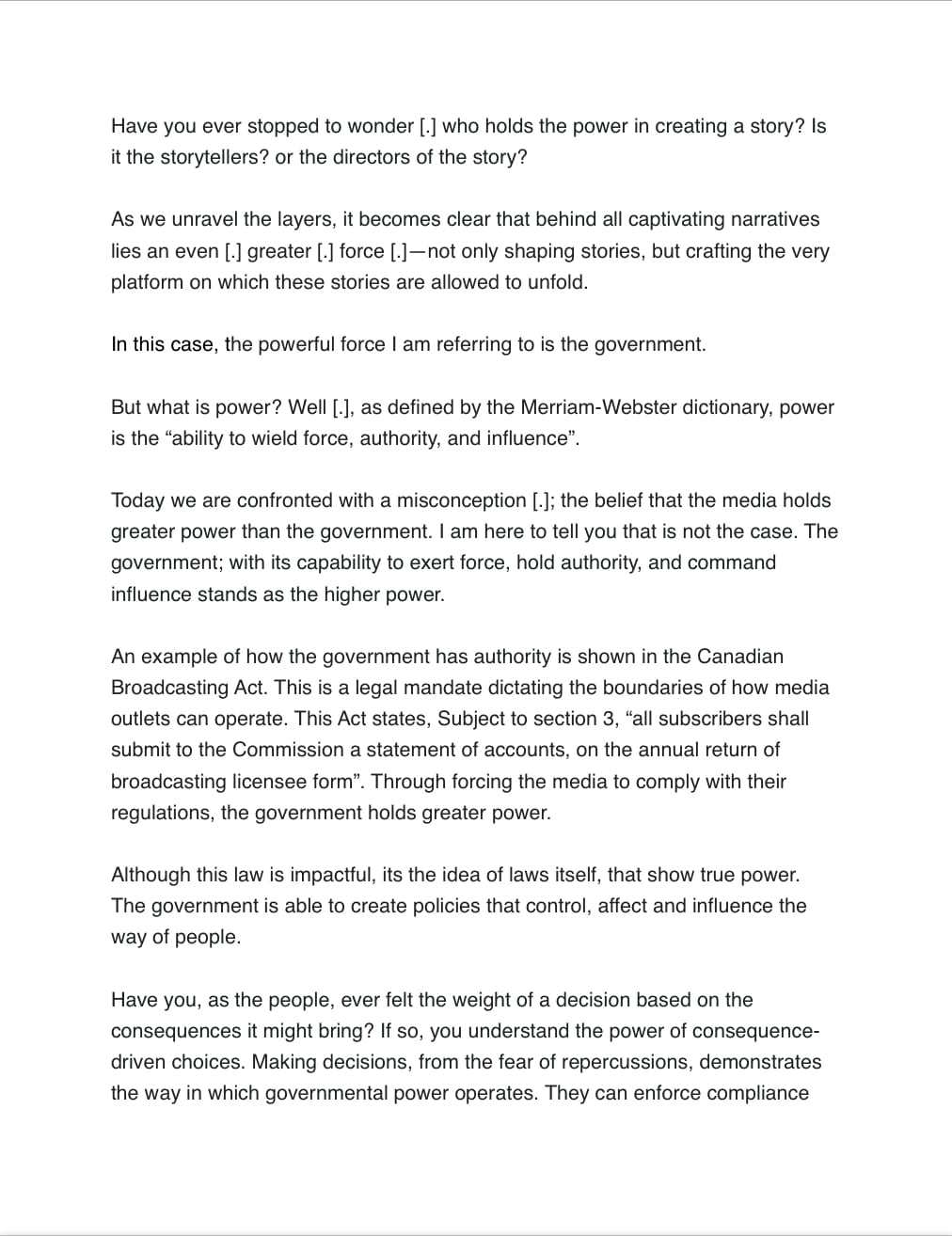Welcome to the blog of a “Master Debater”. I’ve recently completed a new project called “The Great Debaters”. This project, as you probably guessed from the title, was about creating a debate. It was really interesting and new in the sense that we weren’t learning one topic on the curriculum, but more learning how to build our own creation. What I mean by this is that we were tasked with creating a debate, with a topic of our choosing. This was very intriguing to me because I was truly able to create my own learning path throughout this project and encourage myself to learning different things in my own way.
To start of this project we were introduced with the idea that we were going to create a debate, but we didn’t know what we were actually going to be debating. To be honest, when this was shared with us, I was somewhat timid towards the idea because I’ve never done a debate before. Even with this mindset I still was ready to challenge myself. I started to learn more about literately skills through creating a short writing sessions, eventually creating a multi-paragraph writing piece on “the best thing ever”. Through doing this I understood subjects such as parallel structure and simplifying sentences.
Within learning these new skills I also watched the grade above me, the 12’s, preform a scripted debate-like presentation. Even though this wasn’t specifically connected to my project I think it’s a really important learning point to mention. While watching the grade 12 present I c was tasked with giving them feedback based on given criteria. Subconsciously, I feel as if I was taking factors of their presentations to build a foundation of what I could do throughout my debate.
I then moved on to the actual creation of the debate. I started out with picking a debate opponent, then choosing a topic to debate. My opponent was Claire and after discussing we decided to choose the topic of “Media are more powerful than the government”, I was the negative. I started with creating “Need to Know’s”, which helped me lay a foundation of what I would further research. In this process I feel I was really insightful in the way I took notes. I used many sources and did an in-depth connection to different ideas throughout using software in Craft. During my use of my critical thinking skills, I was able to create an “Annotated Bibliography” that evaluated sources that I knew could be used throughout my debate.
After creating the information that would be included in my debate I needed to start creating the debate speech. At this point in time I understood that the format of the presentation would be a four minute speech, one minute rebuttal and a thirty second closing remark. In previous projects, such as “Mightier Than The Sword”, I thought I had a lot of drafts. It turns out in was nothing compared to this project where I totalled to above 30 drafts. This may seem extensive, but I really wanted to do well and prove that I am a sophisticated learner. I received feedback from many of my peers, in addition to my teacher. Even though I may seem like a broken record, I truly feel that this process of revision was crucial to my success. With all of this revision I was finally able to execute a final draft of my speech that I was proud of.
In addition to my speech I knew I was going to have to do a rebuttal. I decided that I would need to do in-dept thinking to have some content prepared. I thought of finding flaws in my speech and brainstorming different ways to back up my idea’s if it was brought up in my opponent’s speech. While doing this I felt that I was successfully showing my expensing qualities, by doing deep thinking, being insightful and showing detail throughout my work.
After the long process of actually creating the content for the debate I was going to actual present it on exhibition day. To sum up how I was feeling, I was nervous. I knew I practiced a lot and understood my topic really well, but the idea of making up a rebuttal on the spot was surprisingly nerve wracking for me.
During the debate, I analyzed what my opponent was saying and checked off certain points in my rebuttal brainstorm that were mentioned. When it came time for me to give my speech, it wasn’t the best out of all of my practice attempts, but I think I still conveyed my thoughts through effective communication. While listening to my opponent’s speech, I thought to bring up the idea of protest and how the government’s power is shown throughout this. My rebuttal was strongly focused on the idea that, even though the media can spark political movements, the government still holds the ultimate power through its ability to make actual change. Even though I encountered a technical difficulty (my timer wasn’t working), I believe I communicated my argument clearly when I presented it. Although this changed the way my presentation went, I still think it went really well overall.
In reflection I think this project allowed me to push myself out of my comfort zone and truly work towards building new skills. I was able to build my communication, preparation and critical thinking skills. With these skills I am able to answer the driving question “How can we use a formal debate to convince an audience we’re right?”. In a formal debate, we can convince the audience we’re right by using strong evidence, clear reasoning, and persuasive speaking. To make our points more convincing we can uses facts, statistics and data. Organizing our ideas in a logical order can help follow our argument. In using persuasive language and effective delivery, we can engage with the audience’s emotions to make our case more compelling overall.
Before you finish reading I encourage you to answer this post’s commenting question: “in a debate would you rather be the affirmative or negative side?”.
Thank you for reading,
Alicia
Credits:
Thanks to Hannah, Noah, Dana and Makenna for giving me feedback and a special thanks to Claire for being a great opponent!





